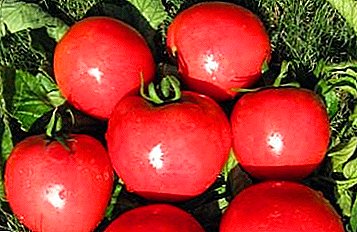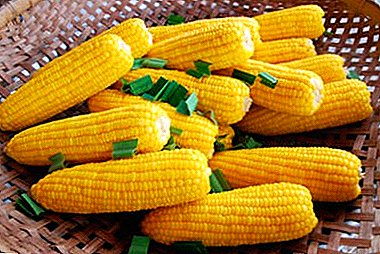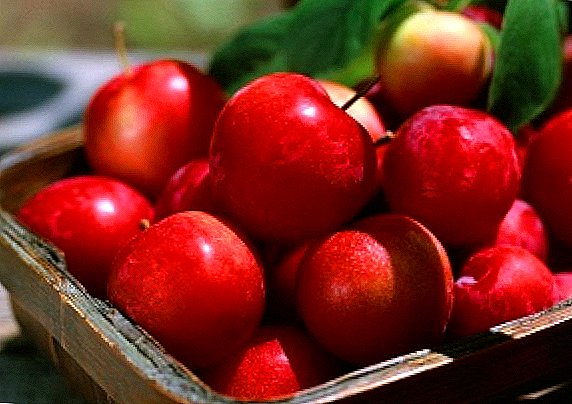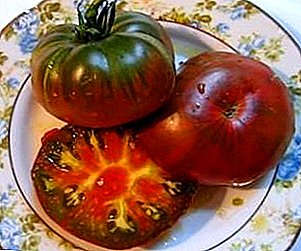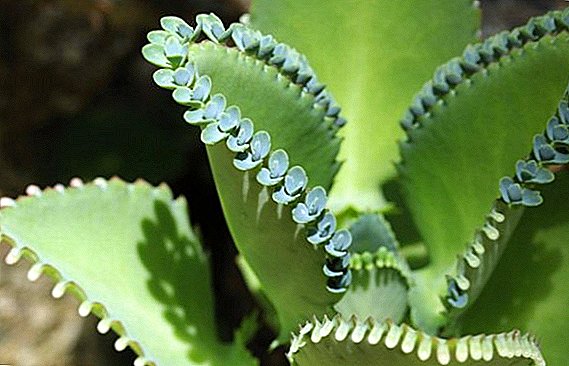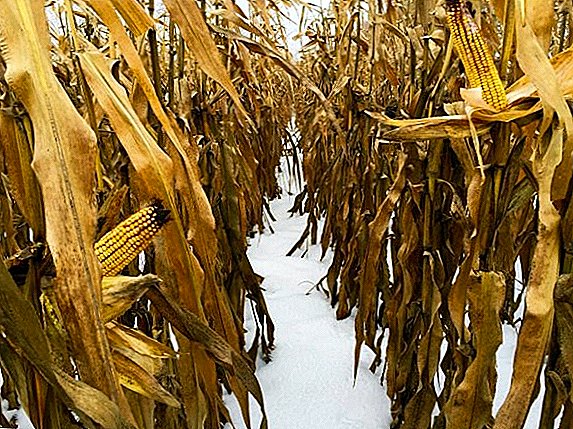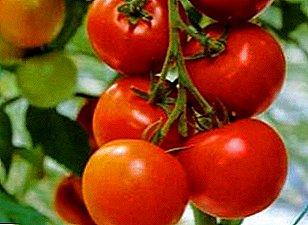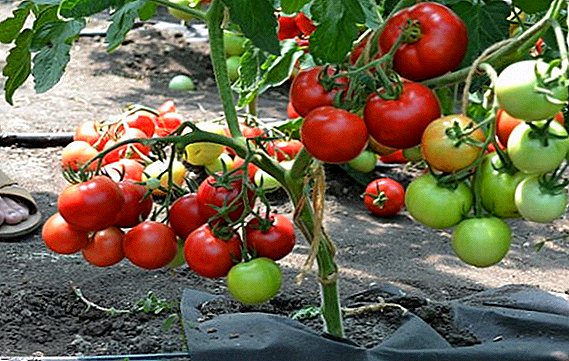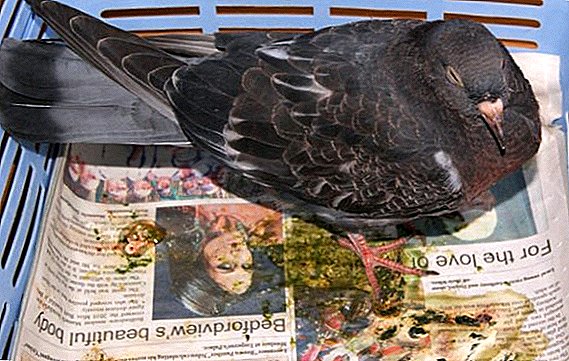 Sometimes pigeon owners are faced with the fact that the birds start to get sick. Several diseased birds can infect an entire flock. In most cases, it is coccidiosis, a contagious disease that must be detected and stopped as soon as possible, as it can be fatal.
Sometimes pigeon owners are faced with the fact that the birds start to get sick. Several diseased birds can infect an entire flock. In most cases, it is coccidiosis, a contagious disease that must be detected and stopped as soon as possible, as it can be fatal.
We will understand what is coccidiosis in birds, what are its symptoms and how to treat it.
What a disease
Coccidiosis - This is a disease caused by coccidia, protozoa, which spread through bird droppings and oral contact. Coccidia, getting into the body of a pigeon, begin to multiply rapidly, causing damage to the gastrointestinal tract. A part of coccidia leaves the body along with the feces, contact with which in other pigeons causes another outbreak of infection.
Did you know? DNA analysis showed that the extinct dodo bird belongs to the same family as pigeons. The closest and still healthy relatives of the dodo bird are Nicobar pigeons, natives of the Nicobar Islands (Southeast Asia).
The disease causes enteritis in the gastrointestinal tract, that is, inflammation of intestinal wall cells and bloody diarrhea.

This disease affects various species of birds, including poultry and poultry. The agricultural poultry industry suffers serious losses from this disease, since chicks and young birds are most susceptible to it. The smallest chicks less than 3 weeks old or adult pigeons very rarely suffer from this disease.
Coccidiosis can cause damage to a pigeon flock, whose members have not previously been exposed to it. The disease spreads very quickly in a warm, humid environment. The risk of infection increases if the pigeon is dirty or the room is poorly ventilated.
Coccidiosis can infect rabbits, broilers, chickens, turkey poults.
The simplest causing coccidiosis in birds is the coccidia of the genus Eimeria, which manifests itself in the following strains or species:
- E. tenella;
- E. acervulina;
- E. maximum;
- E. necatrix;
- E. mivati;
- E. praecox.

Different strains of these protozoa can infect birds and animals of different species: pigeons and chickens, dogs and cats, as well as cattle.
Did you know? Pigeons are famous for their outstanding navigation abilities. When flying, they use the sun and the subconscious feeling of home as a reference, a kind of internal “magnetic compass” that leads them to their native dovecot. A study at Oxford University showed that they can also use road signs, roads and highways as landmarks, even changing direction of flight at intersections if necessary.
How does the infection go
After swallowing oocysts (coccidia eggs) by pigeons, their subsequent developmental stages damage the avian intestinal wall. Within 4-7 days after infection, the pigeon itself begins to secrete oocysts.
There are two forms of coccidiosis:
- Most common asymptomatic (or subclinical) form. After the bird first swallows a small number of oocysts, pigeons develop immunity to infection due to the stimulation of endogenous defense mechanisms (with no visible signs of the disease). Due to the immune protection, which is enhanced by regular eating of a small number of oocysts, birds live in balance with parasites, which protects them from the development of severe intestinal disease.
- Acute leaking visible form of the disease - a real coccidiosis - occurs when young pigeons are infected without immunity, consuming a large number of oocysts, or when the immunity of old pigeons is reduced or destroyed under the influence of stress factors.

Infection of pigeons can occur through roosts, contaminated drinking water, other birds, animals, insects, and even humans. Most adult birds develop immunity to the disease from a previous infection, having parasites in the body (in small quantities).
Immune, but infected adult pigeons can spread the infectious stages of coccidia in the environment with the droppings. Immune individuals can also be reinfected with coccidia without developing any clinical signs of the disease.
The disease occurs when pigeons sensitive to the infection (young or those that have not previously been infected) are attacked by a large number of parasites.
Did you know? Pigeons have excellent hearing ability. They hear at frequencies much lower than human hearing perceives, as a result of which they can hear distant storms and volcanic activity.
Symptoms
In birds susceptible to the disease, clinical signs of the disease appear 4–8 days after infection.

Symptoms are not specific only to coccidial diseases, but usually include such:
- ruffled pose;
- ruffled feathers;
- bloody diarrhea or mucous discharge;
- constant yawning;
- paralysis;
- significant loss of body weight;
- poor coordination of movements on the ground and in the air;
- weakness and drowsiness;
- inflammation of the cloaca;
- bloody spots in the area around the cloaca;
- decrease head size.
Important! It is not necessary to carry out wet cleaning or washing floors in the loft, as coccidiosis oocysts develop faster in a warm and humid environment. Cleaning and cleansing perches of litter is best done with a scraper andtly.
If the poultry farmer suspects coccidiosis, you should immediately contact a veterinarian for help, as with this disease it is very important to determine the diagnosis and begin treatment as soon as possible. Diagnosis of the disease is based on clinical signs, laboratory examination of feces and possible ultrasound examination of the intestinal walls.

How to treat coccidiosis pigeons
Coccidiosis can be fatal to birds. Death is caused by loss of electrolytes due to dehydration. Unfortunately, coccidiosis can be treated only in the early stages of the disease.
The poultry farmer may well suspect coccidiosis as soon as liquid excretions of the litter appear, especially in young birds or after prolonged rainy periods. It is possible to accurately determine the disease after examination of feces under a microscope.
Did you know? Trained carrier pigeons can fly at speeds of up to 177 km / h and fly significant distances thanks to well-developed pectoral muscles. Massive chest muscles in postal breeds account for one third of the total body weight of the bird.
Due to the contagious nature of coccidiosis, it is necessary to isolate the sick individual from other birds. Otherwise, the disease can spread rapidly and become fatal to the whole flock. The early onset of treatment for an infected flock is often successful with the use of anticoccidian drugs that prevent the development of the simplest. Usually they are fed to pigeons through feed or drinking water.

The best treatment is the Toltrazuril Coccidiocide Solution, which acts exclusively inside the intestines. This does not prevent pigeons from flying, so the medicine can be safely used during competitions among elite species. The tool can also be used during breeding and molting.
Dosage and Treatment
The dose is 1 ml per 2 liters of water in the drinking bowl, apply the treatment for 2-3 days.
The drug for the treatment of coccidiosis in pigeons is usually prescribed by veterinarians together with the intake of vitamins. Quite often, “Trivitamin” or fish oil is prescribed in combination with a drug for coccidiosis, because the treatment causes a disturbance of the intestinal microflora and the digestive system.
Find out how pigeons can get sick, how to vaccinate pigeons, what vitamins are better to give pigeons than to feed pigeon and adult pigeons, how to keep pigeons in winter.
This drug can be used only after accurate diagnosis. Repeated treatment may be required. Cells of diseased pets should be thoroughly cleaned daily and then disinfected to avoid reinfection.
Full recovery after a course of drug treatment can be ascertained when coccidial oocysts are no longer found in the feces during laboratory tests.

This disease is also treated with such drugs:
- Zoalin;
- "Coccidin";
- "Furagin";
- Baycox.
Important! Birds acquired from other pigeons, It is necessary to subject to isolation quarantine for a period of at least 10-12 days and prophylactic treatment. If this is not done, the infection can be transmitted from one flock of pigeons to another.
Prevention
Simple hygienic methods are very effective in the fight against coccidiosis in pigeons. Placing birds into individual cells that prevent access to other feces will greatly help control the spread of coccidiosis.

If the cellular content is not applicable, then it is important to do so as far as possible to exclude the development of infectious stages of coccidia. The floors in the pigeon should be cement or concrete, they should be daily cleaned from litter with a broomstick. It is not recommended to wash the floors in the dovecap, as coccidia develop rapidly in a humid environment.
Regular disinfection of all surfaces of the room is also recommended. It is desirable that the tanks for feed and drinking water have a design that prevents the ingress of feces into them.
Did you know? Not only swan pairs are faithful to each other. - pigeons are also monogamous, loyal to their couple and can live together up to 20 years.
It is also recommended to use anti-cancer drugs for prophylaxis. All birds should be treated a month before the start of the breeding season. Also necessarily apply preventive treatment on beginners. It is advisable for the poultry farmer to receive recommendations from the veterinarian regarding the individual regimen of treatment for pigeon flocks.

To prevent coccidiosis:
- need to keep the attic or dovecote in a dry state and keep clean;
- avoid contact with feed and droppings and regularly treat ill pets;
- it is undesirable to allow birds to drink water from gutters or muddy pools;
- Do not allow contact of feed and water with rodents;
- isolation of new birds for several weeks is mandatory, as they are the main target for the spread of Coccidiosis;
- post pigeons returning home after a long flight should receive preventive treatment immediately upon return;
- Egg nests should be disinfected weekly.
Learn how to make a pigeon feeder, how to build a dovecote.
When coccidiosis is diagnosed in pigeons, treatment should begin without delay. Consult with a veterinarian and proceed to treatment activities. After the treatment, your birds will be healthy and active again.
Pigeon coccidiosis: video
How to treat coccidiosis in pigeons: reviews
SergeiM writes:
Or is it better to drink ????
Water


Baycox is applied according to the standard scheme - it is indicated in the instructions for the preparation.
7mg / kg for 2 days and repeat after 5 days for another two days.
The dosage of Baycox in 0.1 ml per pigeon is normal. But to give it to the beak undiluted is cruel, concentrated Baikoks is very nasty for the bird and it will spit hard. It would be good to dilute 0.1 ml of bikocox with saline or rehydron to 1 ml and give the resulting amount to the bird.
Also the next day.
Then a break - 5 days and again 2 days of admission.
The regimen should correspond to the life cycle of coccidia, and it is 7-9 days.
Two days of admission, a break of 5 days and another 2 days of admission - just fit into 9 days.
For 5 days, the full cycle does not go through and the new "coccidia" will appear after the treatment and heal themselves further. This is still my opinion, as they say "to the heap" to all of the above.



